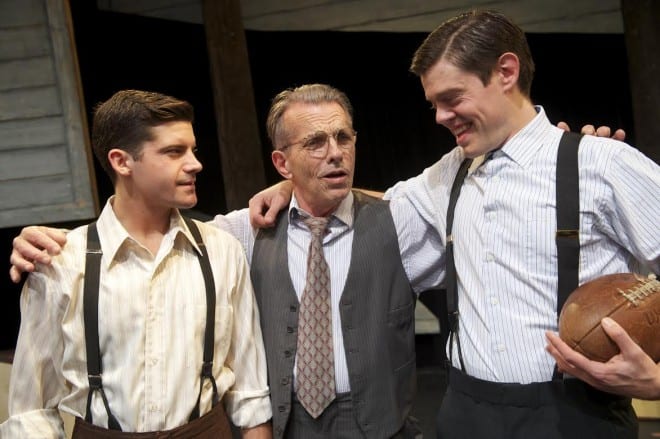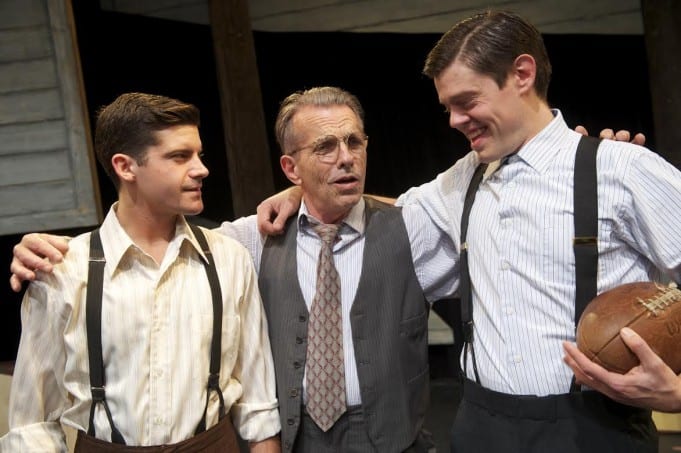Muffled sniffles popping up across the audience during the last 15 minutes of San Jose Stage’s production of Death of a Salesman confirmed two things.
First, Arthur Miller’s 1949 emotional account of the contradictions of middle class America played out through the Loman family continues to work for today’s audiences. That alone is heartening because those deeply rooted contradictions play out slightly differently today.
Secondly, this production of Death of a Salesman stands right up there with their other award-winning productions. While initially, I thought of these rare gems as flukes, San Jose Stage pulled off one killer production after another, making them one of the most consistently excellent houses on the Peninsula.
King’s performance was so powerful that it had a halo effect on the other performers
With regard to Death of a Salesman, much of the credit lies with artistic director Randall King’s nuanced performance of Willy Loman. King’s performance was so powerful that it had a halo effect on the other performers – justifying their motivation and making them make sense. His physical persona – particularly the glasses, head shape and hair – reminded me of Joseph P. Kennedy, gone to seed, which isn’t a bad image to have in the back of your head when watching this play.
That halo effect wasn’t exactly needed because other principals were so damn good. I’d never appreciated the enormous strengths in Willy’s wife Linda until Lucinda Hitchcock Cone perfectly channeled Arthur Miller’s enormous compassion for his characters. While some critics can natter on about Death of Salesman and the failings of American capitalism, it really is about so much more. Cone gets that perfectly, and delivers a performance that elevates everyone else on the stage.

Danny Jones, as Biff, and Jeffrey Brian Adams, as Happy (has anyone else spun a few brain cells on just how strange it is that this character has same name as the late Nelson Rockefeller’s wife?) were remarkably effective. Jones’ unusual features force you to look more deeply at Biff, which is a good place to have the audience energy focused. Adams’ for this part, remains more opaque; he suffers less than his brother, if only because it’s in his interest not to look too deeply at a world he’s barely making it in.
As with many other San Jose Stage productions, Death of a Salesman has an unremarkable set. The largest source of visual variety was the changing projections of the exterior of the Loman’s Brooklyn home, which is threatened to be devoured, at least in spirit, by a boom that’s passing the Lomans by. As before, this works well as it keeps audience attention focused on the actors. The only off note was the unmatching ends of the bed – one a metal frame and the other a wooden footboard.
Death of a Salesman plays the San Jose Stage through April 26th.



